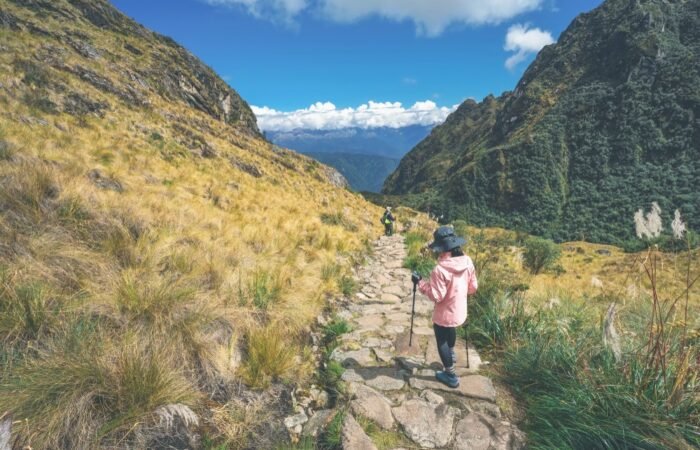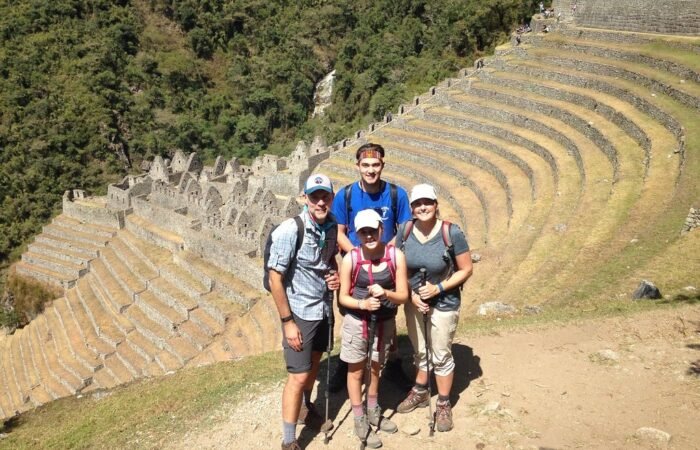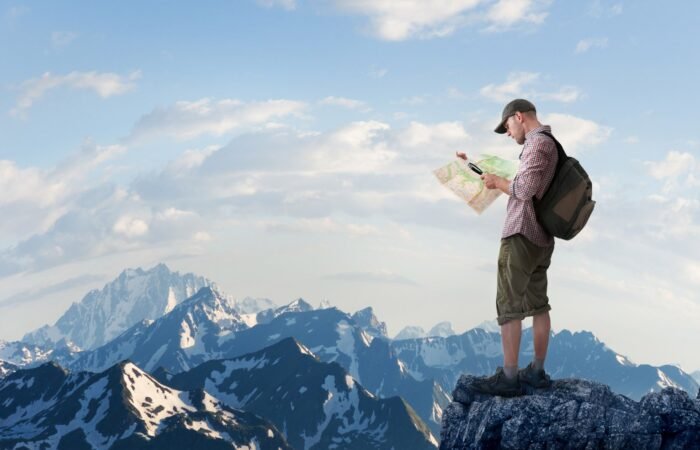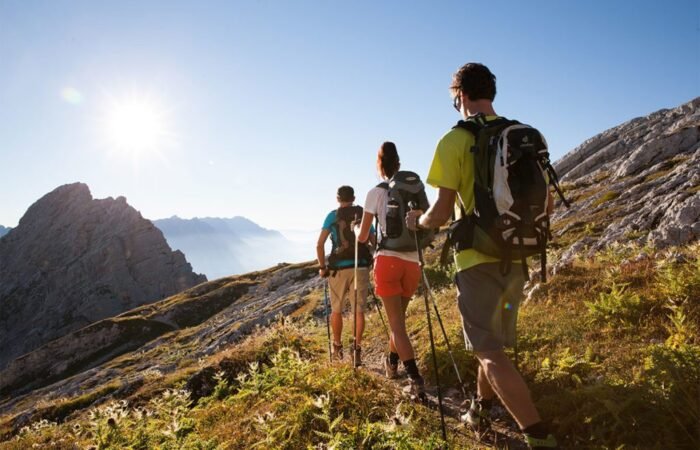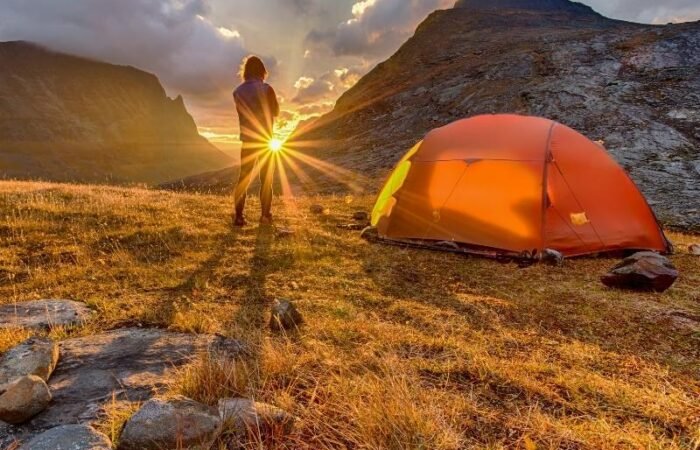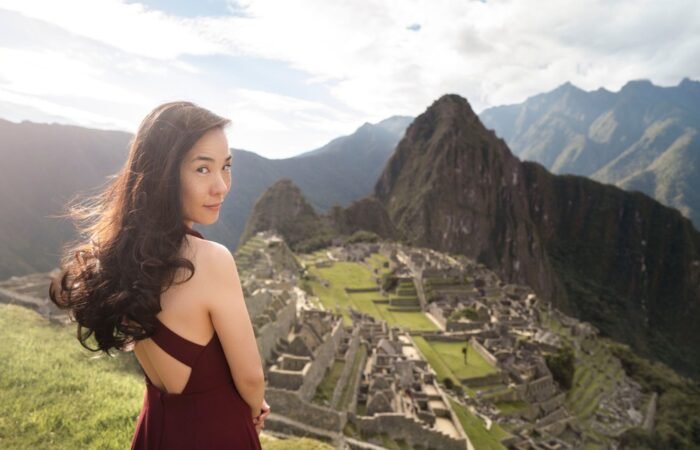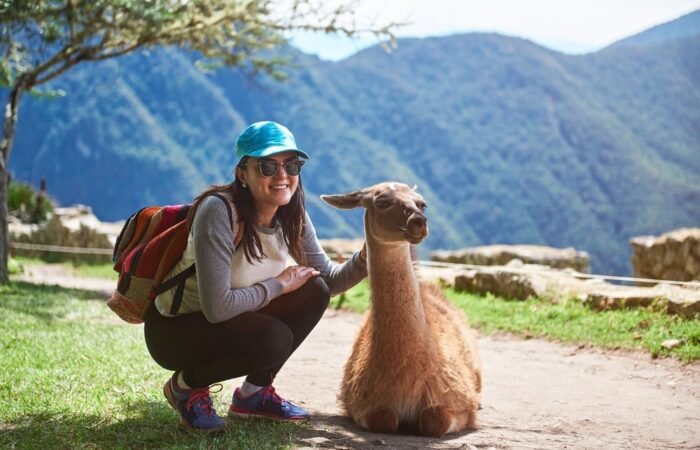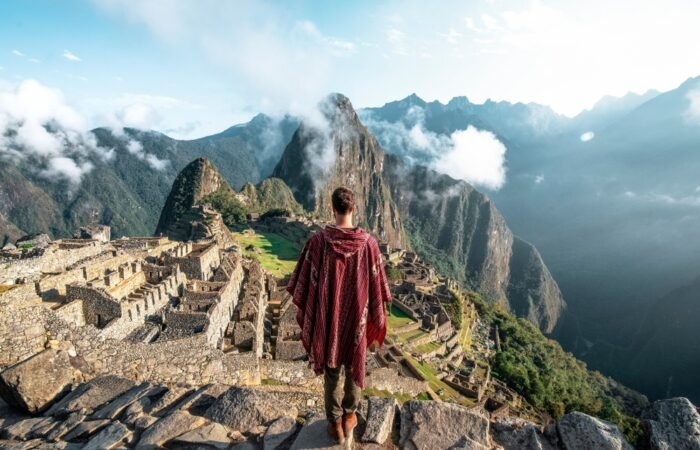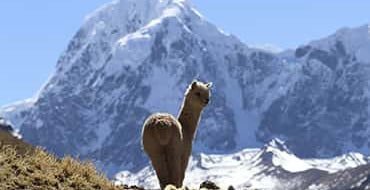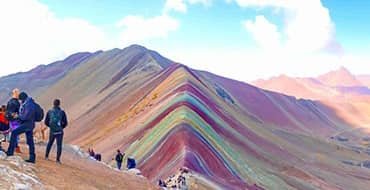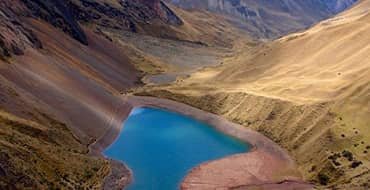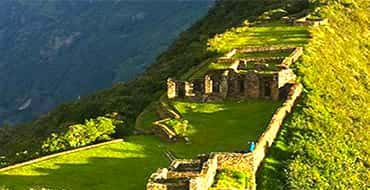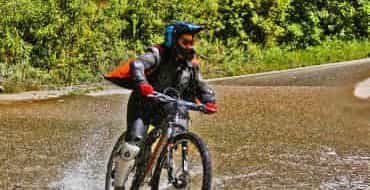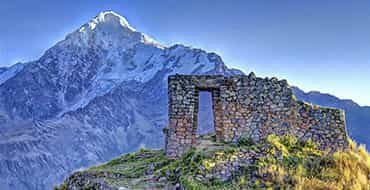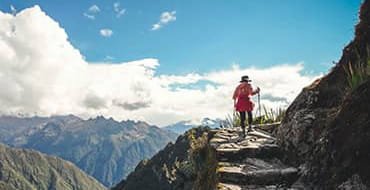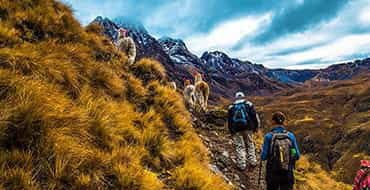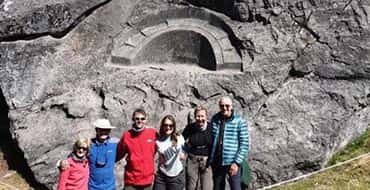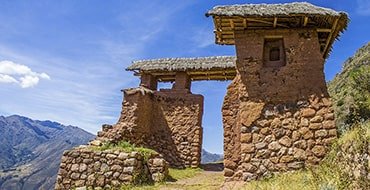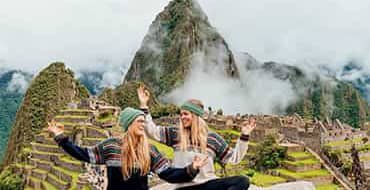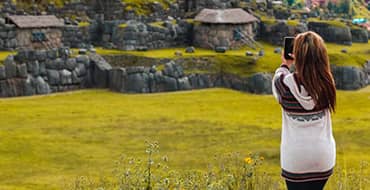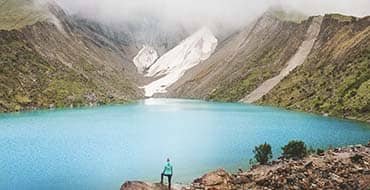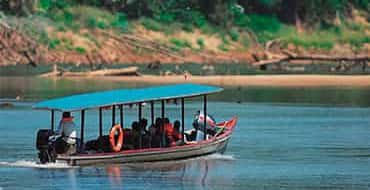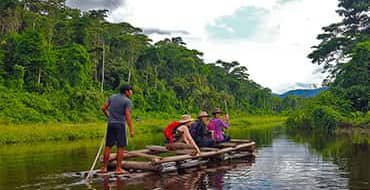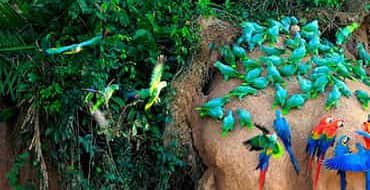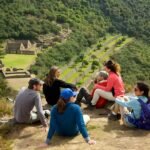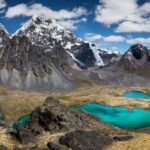

Introduction to the Adventure
Embarking on a memorable journey from Ausangate to Machu Picchu offers adventurers an unparalleled opportunity to explore the breathtaking landscapes of the Peruvian Andes. This 4-day trek is not just a hike; it is a deep dive into a realm where nature’s beauty intertwines with rich cultural heritage. At the heart of this journey lies the famous Mountain of 7 Colors, also known as Vinicunca, which serves as a stunning emblem of the region’s diverse topography.
Travelers will be captivated by the vibrant hues of the mountain, a spectacle that draws hikers from around the globe. The kaleidoscopic colors result from sedimentary mineral deposits, creating an unparalleled visual feast that is as alluring as it is unique. Each step along the trail reveals awe-inspiring vistas: towering snow-capped peaks, pristine glacial lakes, and lush valleys filled with endemic flora and fauna. The pristine environment remains untouched by commercialism, allowing trekkers to connect with nature authentically.
Moreover, the journey is enriched by the opportunity to engage with local communities. As travelers traverse ancient pathways, they will encounter Quechua-speaking villagers who retain their traditional way of life, providing insights into their customs and practices. This interaction is not only educational but also enhances the overall trekking experience, making it truly immersive.
As you make your way towards Machu Picchu, the landscape transitions from the rugged highlands to the lush cloud forests, encompassing the rich biodiversity of the region. The blend of historical significance and natural splendor creates an unforgettable adventure, making the trek from Ausangate to Machu Picchu a must-do for any avid explorer. Excitement lies at every bend in the path, setting the stage for a truly epic expedition.


Day 1: The Journey Begins at Ausangate
The adventure to the Mountain of 7 Colors, also known as Vinicunca, commences in the charming village of Ausangate, nestled amidst the breathtaking Peruvian Andes. On this first day of the trek, adventurers are greeted by the stunning scenery, characterized by snow-capped peaks and vibrant green valleys. The rugged terrain sets the stage for an unforgettable journey, as the trek serves both as a physical and cultural immersion.
As trekkers gather for the orientation, they are introduced to the overall itinerary, with a particular focus on the challenges and joys of the journey ahead. Knowledgeable guides provide crucial insights into local customs and practices, enhancing the experience and fostering respect for the indigenous communities. Participants learn about the significance of the region, including how local traditions contribute to the rich tapestry of Andean culture.
On this initial leg of the journey, the importance of acclimatization to the high altitude cannot be overstated. With Ausangate situated at approximately 4,800 meters (15,748 feet) above sea level, travelers are encouraged to take it slow and remain hydrated. The gradual ascent allows the body to adjust to thinner air, ultimately reducing the risk of altitude sickness. Trekkers might experience shortness of breath or fatigue, making it essential to listen to one’s body.
As the trail winds through scenic landscapes, participants will encounter diverse flora and fauna unique to this high-altitude environment. The vibrant colors of the native flowers juxtaposed with the stark mountainscape create an awe-inspiring visual representation of nature’s beauty. Captivating photo opportunities abound, making every moment memorable as hikers begin to bond with fellow adventurers. This first day concludes with a sense of camaraderie and anticipation for the thrilling experiences that await on this epic journey to the Mountain of 7 Colors.

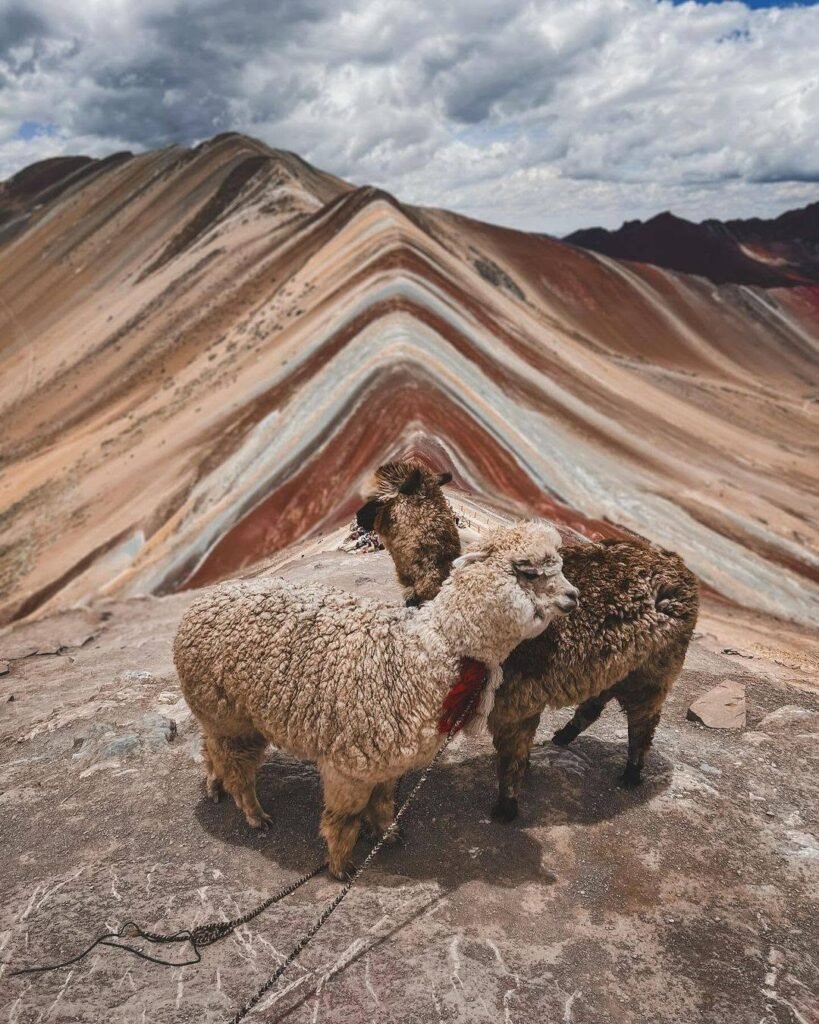
Day 2: Trekking to the Rainbow Mountain
On the second day of our epic adventure, the trek to the famed Mountain of 7 Colors, known as Vinicunca, began in earnest. The anticipation was palpable among trekkers as we set forth, surrounded by the breathtaking landscape of the Peruvian Andes. The early morning air was crisp, amplifying the sensations of excitement and challenge that lay ahead.
The path to the Rainbow Mountain is characterized by its steep ascents and unpredictable weather, which can add an extra layer of difficulty. As the elevation increased, trekkers found themselves navigating rocky terrains, making careful steps to maintain balance. It was not uncommon for altitude sickness to affect some members of the group, causing shortness of breath and mild headaches. Thus, it was essential to acclimatize properly before embarking on this portion of the trek and to remain hydrated at all times.
Despite these challenges, the journey was laden with rewards. The views along the trail were nothing short of spectacular, with panoramic vistas that showcased lush valleys and towering peaks. The diverse flora and fauna provided intriguing distractions, with local wildlife such as llamas and colorful birds occasionally gracing our path. As we trekked higher, the vibrant landscapes became increasingly striking, hinting at the natural wonder that awaited at the summit.
After hours of steady hiking, the moment finally arrived. Rounding the final bend, trekkers were met with the awe-inspiring sight of the Mountain of 7 Colors, a true spectacle of nature’s artistry. The vivid hues displayed – deep reds, vibrant yellows, and lush greens – were the result of mineral deposits, creating a surreal tapestry that seemingly defied imagination. This exhilarating arrival marked a triumphant moment in our journey, serving as a reminder of both the challenges endured and the beauty attained through perseverance.


Day 3: Exploring the Surrounding Villages
The third day of this remarkable journey presents an unparalleled opportunity to delve into the rich cultural heritage of the Quechua people, who call the breathtaking landscapes surrounding the Mountain of 7 Colors home. Our trek takes us to several nearby villages, where we can witness and engage in the daily lives of local communities. This immersion not only enhances our understanding of their traditions but also adds a profound dimension to the overall trekking experience.
The morning begins with a visit to the vibrant village of Tinki, known for its artisans who skillfully craft intricate textiles. Here, travelers may have the chance to participate in a workshop, learning traditional weaving techniques that have been passed down through generations. The village is alive with the colors of handmade crafts, where each thread tells a story of the Quechua culture, reflecting their connection to nature and the Andean cosmology.
Moreover, engaging with the Quechua people deepens the trekking experience by fostering an appreciation for their sustainable farming practices. Visitors will witness the thriving agricultural methods that have sustained these communities for centuries, often relying on traditional approaches steeped in ancestral wisdom. This not only enriches our adventure but also cultivates respect for the delicate balance between human existence and environmental stewardship.
As Day 3 concludes, trekkers will leave the surrounding villages with a newfound respect for the Quechua culture, significantly enhancing their experience on the trail. The connections made during these interactions will resonate, making the journey to Machu Picchu all the more meaningful.


Day 4: Concluding the Trek and Arriving at Machu Picchu
The final day of the trek marks a significant culmination of the journey, as adventurers make their way down toward the iconic Machu Picchu. After an exhilarating three days filled with diverse landscapes and cultural enrichment, the anticipation of witnessing one of the New Seven Wonders of the World becomes palpable among the group. The descent offers breathtaking views of the surrounding mountains and valleys, providing a stunning backdrop that inspires reflection on the transformative nature of the trek.
As trekkers navigate the winding trails, there is an emotional sense of accomplishment. Each step downwards signifies not just the end of a physical journey, but also a personal achievement that resonates deeply within each individual. The camaraderie developed among the group throughout the expedition enhances this moment, as shared experiences are fondly recalled and memories made during the trek come flooding back. The sight of Machu Picchu gradually coming into view continues to motivate the group, invigorating them with renewed energy as they approach their destination.
Upon arriving at the entrance to Machu Picchu, practical arrangements become essential. It is advisable to have pre-booked entrance tickets to avoid disappointment, particularly during peak tourist seasons. Timed tickets are typically required, allowing visitors to plan their exploration of the ancient citadel efficiently. Guided tours are also available, providing insights into the history and significance of the ruins. Visitors should ensure that they arrive early to capture the mesmerizing views and to appreciate the serenity of this iconic site before it begins to bustle with tourists.
As trekkers take their first steps into Machu Picchu, they are rewarded with a sense of wonder and fulfillment. The conclusion of the trek not only signifies the end of an adventure but also marks the beginning of new explorations and a deepened appreciation for Peru’s cultural heritage.


What to Expect in Terms of Physical Preparation
Embarking on the 4-day trek from Ausangate to Machu Picchu is a remarkable experience that requires a good level of physical fitness. The challenging terrain, combined with high altitudes, makes it essential for trekkers to prepare their bodies adequately. Participants should aim to engage in a well-rounded training program at least 6 to 8 weeks prior to their adventure. This preparation will help to build stamina, strength, and endurance, which are vital for navigating the diverse landscapes encountered during the trek.
A well-structured training regimen should include cardiovascular exercises such as hiking, running, cycling, or swimming. These activities enhance cardiovascular health and help in acclimatizing to physical exertion at altitude. Aim for at least 3 to 4 sessions of cardio each week, gradually increasing intensity and duration. Strength training is also critical, targeting core, leg, and upper body muscles. Incorporate exercises such as squats, lunges, planks, and push-ups to ensure that your body can handle the steep ascents and descents encountered on the trail.
Additionally, flexibility training, including yoga or stretching sessions, can greatly benefit participants by improving range of motion, reducing the risk of injury, and aiding recovery. It is advisable to practice hikes with a weighted backpack to simulate trek conditions, allowing the body to adapt to additional strain and enhancing overall endurance.
Given the high-altitude nature of the trek, attention to dietary habits is also crucial. Focus on a balanced diet rich in carbohydrates, proteins, and healthy fats while staying hydrated. Incorporating foods that provide essential nutrients and electrolytes will help maintain energy levels and support physical performance during the climb. Overall, by adequately preparing both physically and nutritionally, participants will optimize their experience and fully enjoy the breathtaking vistas and stunning landscapes of the Mountain of 7 Colors.


Essential Packing Tips for the Trek
Preparing for a trekking adventure from Ausangate to Machu Picchu requires careful consideration of the gear and clothing necessary to ensure a comfortable and enjoyable experience. The varied weather conditions in the region, which can range from warm and sunny to cold and windy, make it crucial to pack efficiently.
First and foremost, appropriate clothing is essential for the trek. Layering is highly recommended; begin with moisture-wicking base layers, which can effectively draw sweat away from your skin. Follow this with an insulating layer, such as a fleece jacket, which provides warmth without adding too much bulk. A waterproof and breathable outer layer is essential, as sudden rain showers are common. Additionally, consider packing lightweight pants that can convert into shorts for versatility, as well as thermal wear for colder nights.
Footwear is another critical aspect of your packing list. Invest in high-quality trekking boots with good ankle support and a sturdy grip, as the trail can be rough and uneven. Ensure that you break in your footwear prior to the trek to avoid blisters. It’s also wise to pack thicker, moisture-wicking socks to enhance comfort and reduce the likelihood of foot issues during the hike.
In terms of gear, a well-fitted daypack is necessary to carry your essentials, such as water, snacks, and a first aid kit. Consider including a hydration system, like a water bladder, which allows for easy access to hydration while on the move. Trekking poles can provide stability, while a portable charger will ensure your devices remain powered for navigation and photography. Food items should include high-energy snacks such as nuts, dried fruits, and energy bars, which can provide the necessary sustenance during the long trekking days.
Finally, remember to pack essentials like sunblock, sunglasses, a hat for sun protection, and a camera to capture the breathtaking scenery. By carefully selecting your gear and clothing, you can enhance your trekking experience, making the journey to the Mountain of 7 Colors truly unforgettable.


Understanding the Cultural Significance of the Journey
The trek from Ausangate to Machu Picchu is not merely a physical adventure; it serves as a profound journey through the rich tapestry of Peruvian culture and history. This region is steeped in Incan heritage, with both sites possessing tremendous cultural significance that resonates with the Andean people. Ausangate, revered as a sacred mountain, plays a pivotal role in local spirituality and is considered the protector of the surrounding communities. Traditionally, it is seen as a source of life, providing water and sustenance to the highland residents. The indigenous communities around Ausangate maintain their ancestral traditions, often participating in rituals that honor the Apus, the mountain spirits believed to watch over them.
Machu Picchu, often deemed the “Lost City of the Incas,” holds its own historical prominence. As an architectural marvel, it reflects the extraordinary ingenuity of the Incan civilization. More than just a tourist destination, Machu Picchu continues to symbolize the spiritual and cultural identity of Peru. Pilgrims and tourists alike traverse its paths, connecting with the past and experiencing the energy that this ancient site exudes. The Incas constructed Machu Picchu as a sacred ceremonial space, and it is thought to have played an essential role in their cosmological beliefs.
The journey between these two majestic sites is thus not only a passage through stunning landscapes but also a continuum of historical and cultural experiences. Travelers engaging in this trek are encouraged to immerse themselves in the rich traditions and stories that the Andean inhabitants share about Ausangate and Machu Picchu. Through this adventure, a deeper appreciation emerges for the spiritual ties these locations have with the local populace, as well as their significance in preserving Peruvian heritage for future generations. Recognizing this cultural context enhances the overall trekking experience, making it an enriching endeavor that goes beyond mere exploration.


Tips for Ethical Travel and Preservation
When embarking on an epic adventure such as the journey from Ausangate to Machu Picchu, it is vital to engage in responsible tourism to ensure the preservation of the breathtaking landscapes and the well-being of local communities. The notion of ethical travel encompasses a broad range of practices that collectively contribute to sustainable tourism. Understanding the impact of travel on the environment and local cultures is essential for every visitor.
One fundamental tip for ethical travel is minimizing the carbon footprint. Travelers can achieve this by opting for group transportation, which not only reduces the number of vehicles on the road but also enhances the communal experience. Choosing to travel during off-peak seasons can also alleviate pressure on local resources, thus allowing for a more genuine interaction with the surroundings and the community.
Respecting local customs and traditions is paramount while exploring indigenous areas. Prior to the trip, travelers should educate themselves about the cultural practices and social norms of the regions they will visit. Engaging with locals in meaningful ways, such as participating in traditional events or supporting local artisans, promotes cultural preservation and fosters an enriching exchange of knowledge.
Another critical aspect of responsible travel is environmental stewardship. Travelers should adhere to the principles of “Leave No Trace,” which encourage individuals to be conscientious about their waste. This includes disposing of trash properly, avoiding single-use plastics, and minimizing noise pollution to protect the natural habitat. Additionally, it is beneficial to support eco-friendly companies and lodges that prioritize sustainable practices.
Ultimately, every tourist has a role in preserving the unique beauty of the Mountain of 7 Colors and its surroundings. By adopting these ethical travel tips, travelers can ensure that their adventures contribute positively to the environment and local populations while creating lasting memories for future generations to enjoy.
